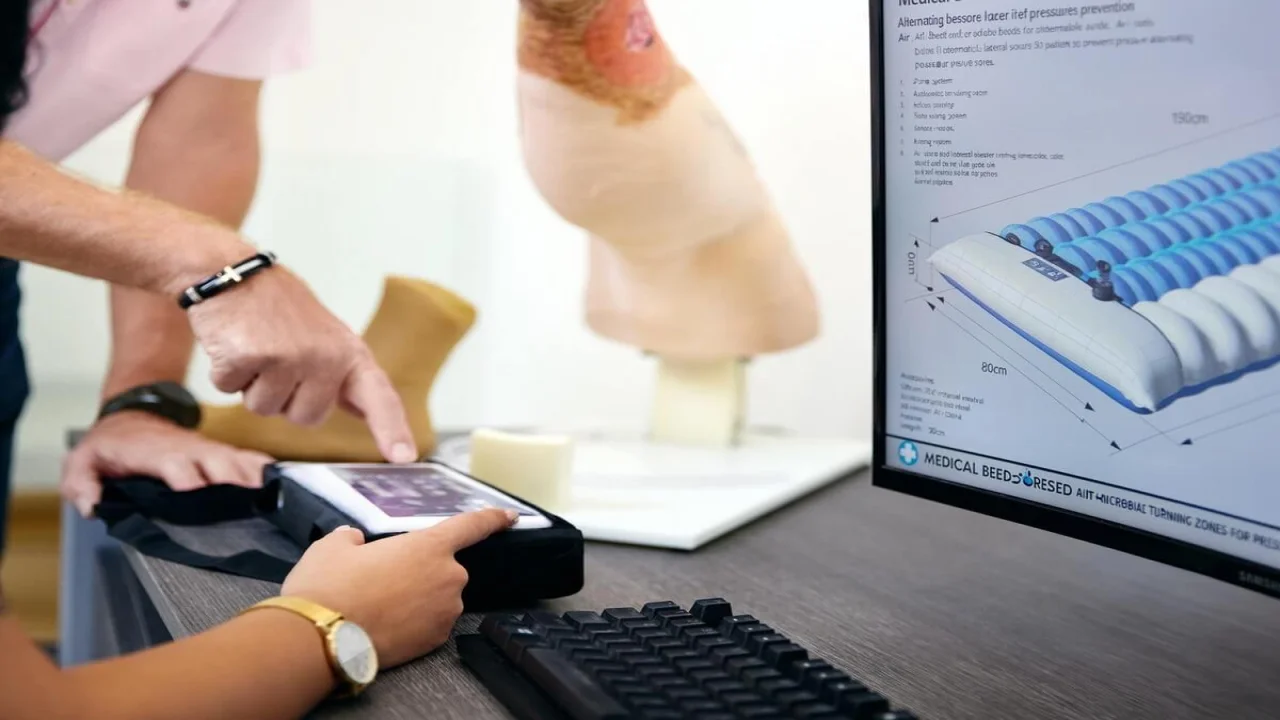Lateral Rotation Mattress vs. Alternating Pressure Mattress: Understanding the Differences
Lateral Rotation Mattresses (LRMs) and Alternating Pressure Mattresses (APMs) help prevent and manage pressure injuries. Learn their key differences, benefits, and which is best for patient care.

Pressure injuries, or bedsores, are a major concern for individuals with limited mobility. The right mattress can be crucial in preventing and managing these injuries. Two commonly used therapeutic surfaces are Lateral Rotation Mattresses (LRMs) and Alternating Pressure Mattresses (APMs). Each type offers unique benefits and is suited for different patient needs. This guide explores their differences to help caregivers and healthcare professionals make informed decisions.
How Pressure Injuries Develop
Pressure injuries occur when prolonged pressure on the skin restricts blood flow, leading to tissue damage. People who spend extended periods in bed or in a wheelchair are at high risk. Using a mattress designed for pressure redistribution is one of the most effective ways to prevent these injuries.
LRMs and APMs help reduce pressure on the body, but they do so differently. Choosing the right option depends on the patient’s mobility, risk level, and overall health condition.
Lateral Rotation Mattress (LRM)
How It Works
A lateral rotation mattress moves the patient from side to side at set intervals. This gentle rotation redistributes pressure, preventing prolonged compression on any one area of the body.
Key Benefits
- Supports Respiratory Health: Helps reduce fluid buildup in the lungs, making it ideal for patients with pneumonia, COPD, or other respiratory conditions.
- Reduces Pressure Injuries: Effectively prevents and manages bedsores by shifting weight regularly.
- Minimizes Caregiver Strain: Reduces the need for manual repositioning, making patient care easier.
Limitations
- Not Ideal for All Patients: People with severe hip pressure ulcers may find the movement uncomfortable.
- Risk of Instability: Patients who need to remain in a highly inclined position may be at higher risk of sliding or falling.
A Smarter Solution: ABeWER multiTURN® 6
The ABeWER multiTURN® 6 is an advanced lateral rotation mattress that addresses common concerns. It repositions patients every 30 minutes, ensuring better circulation and improved comfort. This frequent movement helps deliver oxygen and nutrients to damaged tissues, accelerating healing.
Alternating Pressure Mattress (APM)
How It Works
An alternating-pressure mattress features air cells that inflate and deflate continuously. This process shifts pressure across different body parts, improving circulation and preventing tissue breakdown.
Key Benefits
- Constant Pressure Redistribution: Reduces the risk of skin breakdown by frequently adjusting pressure points.
- Flexible Positioning: This can be used in both flat and inclined positions, making it suitable for patients who need their heads elevated.
- Effective for All Pressure Injury Stages: Helps manage wounds, including those caused by diabetes or surgery.
Limitations
- Limited Respiratory Support: Unlike LRMs, APMs do not aid in clearing lung secretions.
- May Need Additional Features: Some models require a low air loss (LAL) function to help regulate moisture and prevent skin maceration.
Enhancing Healing with ABeWER multiTURN® 6
Frequent repositioning is necessary to optimize healing. The ABeWER multiTURN® 6 ensures continuous pressure redistribution, making it an essential tool for effective wound management.
Comparing Lateral Rotation and Alternating Pressure Mattresses
Functionality
LRMs rotate the patient from side to side, which helps prevent prolonged pressure and supports lung health. APMs use air cells to shift pressure dynamically, ensuring better circulation and minimizing skin damage.
Best Use Cases
LRMs are ideal for patients with respiratory conditions or requiring automatic repositioning. APMs, on the other hand, are more versatile and effective for treating existing pressure injuries.
Positioning Flexibility
Due to their rotational movement, LRMs are primarily used in a flat position, while APMs offer greater flexibility. Patients who need to remain in an inclined position for extended periods may benefit more from an APM.
Pressure Redistribution
LRMs rely on rotation to relieve pressure, while APMs use cyclic inflation and deflation. Both methods are effective, but the best choice depends on the patient’s medical condition.
Potential Risks
Patients with advanced hip pressure ulcers may find lateral rotation uncomfortable. Additionally, LRMs may pose a fall risk if used at a high incline. APMs, while effective, may require an added low air loss feature to keep the skin dry and healthy.
Choosing the Right Mattress for the Patient
When to Choose a Lateral Rotation Mattress
- The patient has respiratory conditions such as pneumonia or COPD.
- Frequent turning is needed, but manual repositioning is difficult.
- No advanced hip pressure ulcers are present.
- The patient remains mostly in a flat position.
When to Choose an Alternating Pressure Mattress
- The patient needs both pressure injury prevention and treatment.
- They require various positioning options, including an inclined position.
- They do not have severe respiratory issues.
- They can move independently or with assistance.
Final Thoughts
Lateral Rotation Mattresses and Alternating Pressure Mattresses are vital in managing pressure injuries. LRMs are best for patients needing respiratory support and automated repositioning, while APMs are more adaptable for general pressure injury treatment. Choosing the right mattress comes down to the patient’s specific health requirements.
The information on this page is peer reviewed by a qualified editorial review board member. Learn more about us and our editorial process.
Last reviewed on .
Article history
- Latest version
- Last updated by Dayyal Dungrela, MLT, BSc, BS
- Posted by BS Media